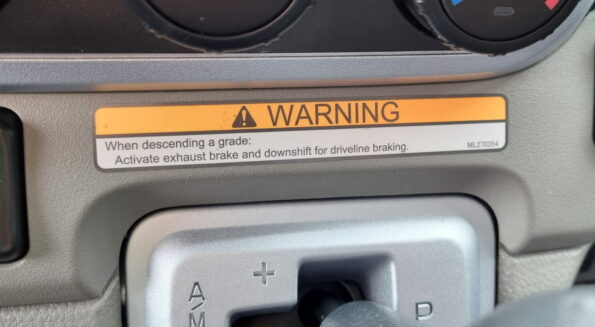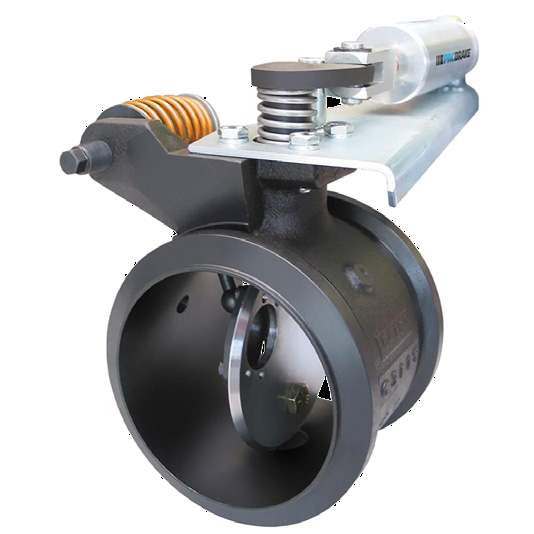Diesel engines have no throttle butterfly in the intake, so a full charge of air is always drawn into the cylinder, regardless of the throttle setting. Each time the air is compressed in a cylinder virtually 100% of that energy is returned to the crankshaft, meaning very little engine braking occurs. Therefore different types of equipment are fitted to give some braking when the throttle is released so that the vehicle doesn’t rely fully on the service brakes, thus reducing the likelihood of brake fade.

An exhaust brake is a way of slowing a diesel engine by closing off the exhaust path from the engine. This causes the exhaust gases to be compressed in the exhaust manifold and in the cylinders. Since the exhaust gases are being compressed and there’s no fuel being applied, it’s like the engine working backwards, slowing down the vehicle. This compression is called back pressure, and the amount of braking supplied is directly proportional to the back pressure. It can produce up to around 60 PSI which presses against the cylinder, slowing its upward movement.
The exhaust brake is a device that blocks or restricts the gases from leaving the system.

Exhaust brakes work automatically from start. If you have any exhaust leaks, it will reduce the effectiveness of the exhaust brake. Modern exhaust brakes have exhaust pressure modulation (EPM) which controls the back pressure. This enables the braking performance to be optimised across a range of engine speeds.
Exhaust brakes retain heat around the exhaust valves for longer resulting in faster wear on the valves.
A good exhaust brake would be capable of slowing a heavy vehicle down to a crawl. Exhaust brakes are less effective than compression brakes (often called Jake Brakes), but produce a lot less noise.
